by Joey Case
Practicum in Anthropology
Faculty Sponsor: Dr. Terry G. Powis
Abstract
During the Mississippian Period (1000-1500 CE) the Etowah River Valley experienced waves of population growth and decline with communities of people entering the valley from across the Southeast region of the U.S. leading to a unique intersection of ceramic, architectural, and lithic styles. One element of this intersection was daub, the name given to clay that has been plastered onto the surface of branches or river cane woven between pine posts called wattle. Even today, people use wattle and daub construction to build domestic structures for protection from the weather, insulation, and privacy. However, in the archaeological record daub is extremely under-emphasized due to the fragile nature of the clay if it has not been fired. Clay, both fired and unfired, is prone to disintegrating without the proper storage methods, meaning that that daub can be difficult to collect, store, and transport unless properly protected. It can also be difficult to differentiate between fired clay and daub. But, if daub is preserved, what questions can it answer about the people making it? How much energy and effort were put into its production? Is daub differently sourced from clay used to manufacture pottery? Was any temper added to daub to prevent it from cracking and shrinking once applied to the walls of the house? These questions along with others will be addressed in the paper regarding the excavation of a burned Wilbanks Phase (1200-1350 CE) house excavated by Kennesaw State University.
Introduction
This study was originally conducted with the goal of establishing a connection between the composition of daub and pottery as well as the application of daub to the house’s wattle frame. However, over the course of my research as more questions began to rise, the direction changed to become more about understanding whether the daub from this site was prepared, as well as how it differs from non-daub burned clay (NDBC) and pottery clay (Figure 1). One of the leading factors driving this research was the lack of academic information I was able to find on daub in the Southeastern United States. When daub is mentioned in academic literature, it is typically noted to be a byproduct of an excavation as opposed to the focus, with more importance being placed on artifacts like lithics and ceramics (Hally 2008; Forget 2015; Harris 2020; Peacock 2011; Sherard 2009). This lack of information led me to attempt the creation of my own daub identification method as well as trying methods I haven’t seen used to study daub such as petrographic analysis and Portable X-Ray Fluorescence (pXRF). During the early stages of research, I had very little knowledge of daub beyond basic identification and compositional properties. I knew that it was a material used as insulation and protection, but didn’t know anything about its creation, social impacts, or differences from NDBC. As the project evolved, my aim changed from establishing a connection between pottery and daub to establishing an origin for the daub clay when compared to raw clay. Specifically, raw clay samples taken directly from the ground adjacent to the Middle Mississippian (Wilbanks period 1260-1300 CE) house, and then determining whether the daub clay was prepared at all or if it just consists of raw clay plastered onto the wattle frame.
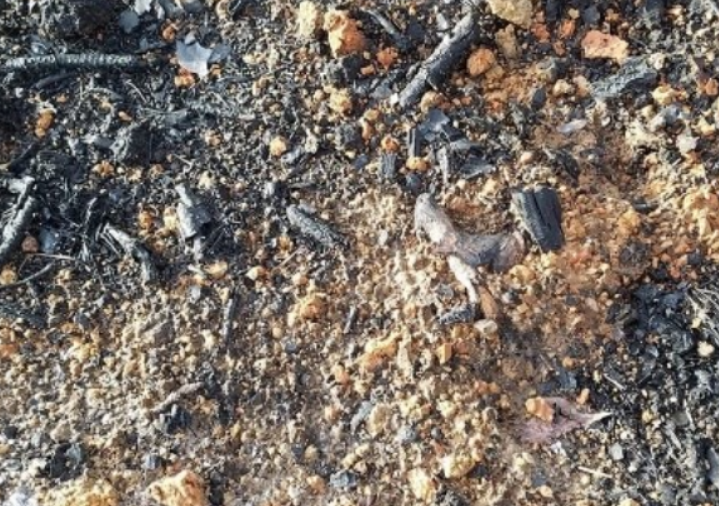
Figure 1: An example of NDBC; fired during a bonfire, this burned clay has no architectural context,
but could still be confused for daub. (Photo from Harris 2020, 33).
Background Information
When examining the prehistory of the Etowah River Valley in Bartow County, there is evidence of populations moving in and out quickly, creating ephemeral settlements adjacent to the Etowah Indian Mounds. This relatively rapid change in population is partially attributed to warfare, where settled areas were abandoned to avoid the destruction of the sedentary and agricultural-based lifestyle of the people living there. Further proof of this is comprised of trace archaeological evidence that fortifications were found in the Etowah and Coosawattee Valleys (King 2003). Similarly, the assimilation of smaller communities into larger populations for protection against warfare might explain why there were such diverse habitation trends in the valley. Some evidence for this assimilation can be found through the analysis of ceramics, where we see Alabama-style limestone temper found in ceramics uncovered in the Etowah Valley (Little 1999). This intersection of culture is part of why the Etowah River Valley is such an important and intriguing part of the archaeological record that can further our knowledge of how these groups interacted and moved throughout the area.
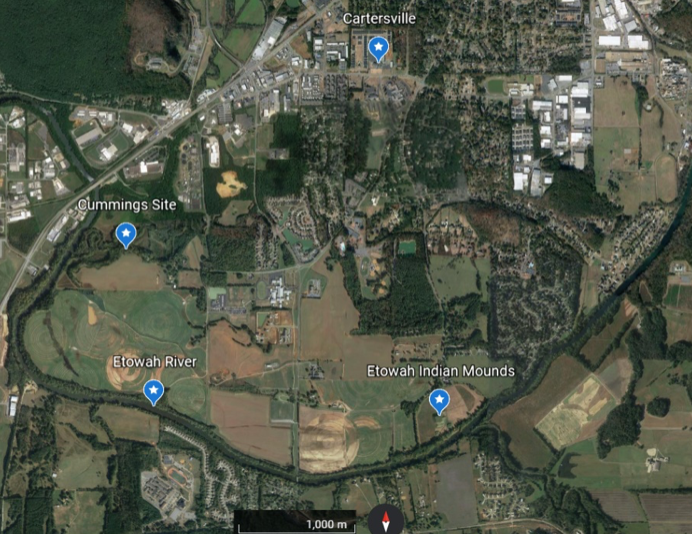
Figure 2: A map of the Cummings Site in relation to the Etowah Indian Mounds, City of Cartersville, and the Etowah River.
The Cummings Site, where this daub was found, is a multicomponent site within the Etowah River Valley (Figure 2) comprised of Woodland, Mississippian, and historic components. The Mississippian Period already has a wealth of knowledge published about the lifestyle and subsistence patterns of the people living during that time. We know how they hunted, how they crafted tools, who they traded with, and more, but one area with a dearth of research is how they constructed their housing (Brown 1990, Cobb 1996, Emerson 2008, Milner 1986, Sherard 2009). We know that this group of people used a method called wattle and daub (Figure 3), but beyond the use of this method we know very little about how they sourced or prepared the materials. Wattle and daub construction is the architectural practice of plastering an earthen material, typically clay, onto a woven frame of branches or withies to form a solid barrier. Evidence of this construction method is found across the globe and throughout time from ancient Mesoamerica to modern Europe and South America (Lacquement 2004; Sunshine 2006). My focus, the “daub”, refers to the actual material that is plastered onto the woven sticks/cane comprising the wattle frame as opposed to the structure in its entirety. In Native American architecture, daub is understudied due to several restricting factors such as the fragility of clay, the amount of space needed to hold efficacious samples, and the lack of guidelines for daub identification.
What we do know of wattle-and-daub structures is that they were used worldwide in prehistoric and historic architecture acting as insulation, privacy, and protection from the elements within a structure as well as partitions, fences, and palisades (Griffin 2022; Harris 2020). Even in the present day, wattle and daub structures are used for low-cost building materials in some parts of the world (Sunshine 2006). And before handmade bricks and metals were used to build structures, evidence that earthen building materials such as daub were commonly used can be found in the archaeological record through their proximity to excavated domestic structures. Yet somehow, even with the prevalence of this construction method across time, intensive academic literature has not yet been written (in English), pertaining to daub and its composition or preparation. Unlike other earthen building materials such as cob or adobe, the clay isn’t set into bricks that can maintain their structure independently, but rather is plastered onto a wall/surface while wet. Due to the fragile nature of clay-based materials such as daub, it can be difficult to excavate and retain daub samples when they are recovered on a site due to the necessary conditions required for them to remain “whole”. Daub can also be difficult to study due to the sheer amount of storage space required when a daub fall (the area in which daub may be scattered once a structure is destroyed)is found on a site while being excavated. My total sample had 2,004 pieces of daub (larger than 5mm) that weighed >8,000 grams, and even this sample is not enough to build a whole wall, let alone the amount needed to fulfill an entire four-sided structure. Beyond these factors, there are many post-depositional factors that can arise when excavating a daub fall. Most commonly in the Southeast, historic field plows can disturb large areas of daub falls, moving them from their original location, disintegrating them due to the fragile nature of daub, or destroying the context needed to discern the use of the daub, whether it was a partition wall from a garden/fortification, or house wall. In the past two decades, more journal articles have emerged about the different aspects of Southeastern US daub, including the recreation of Mississippian houses (Lacquement 2004), the energy expended while constructing with daub (Harris 2020), and the fracture patterns of daub falls (Kruger 2015). These are great resources for the furtherment of research in Mississippian architecture, and I feel that before long daub will reveal a lot about the preparation and construction of prehistoric Native American houses.
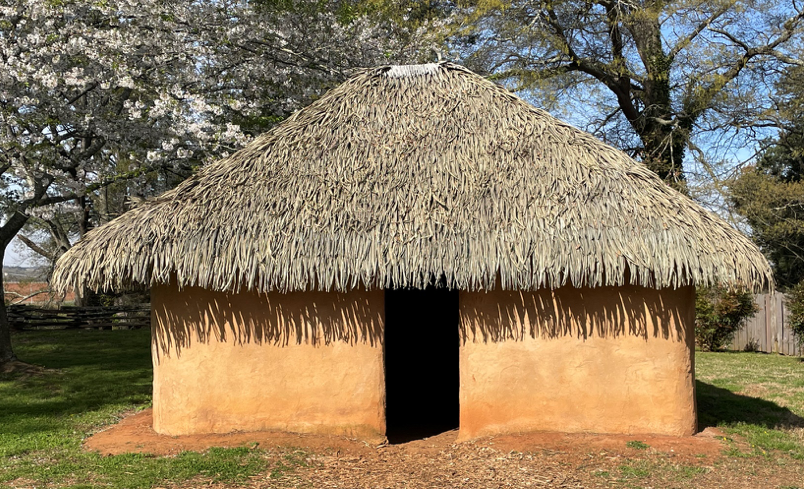
Figure 3: A recreation of a wattle & daub house located at the Etowah Indian Mounds, Bartow County, Georgia.
Methods
The analysis of recovered daub, proximate ceramics, and raw clay samples took place in the Anthropology Lab and the Ceramics Studio at Kennesaw State University. Due to the nature of this undergraduate research, the primary methods used for examination were low tech, save for six samples sent to Wagner Petrographic in Lindon, Utah for petrographic analysis, and one day with access to a pXRF scanner. The petrographic analysis provided glass slides containing a thin cross-section of a daub sample that can then be examined with more scrutiny under a microscope. The pXRF scanner uses X-Rays to illuminate different elements within the item being scanned, and then, based on the reflection, identifies the quantity of each element.
To begin my identification and classification of daub, a map of all the units at the Cummings Site was made. The units were then whittled down to only include those that were within the border of the Wilbanks Phase house being excavated. Although this may limit the daub samples, it also eliminates the issue of accidentally including brick from the nearby tenant farmer’s house (which may look like daub due to post-depositional alterations), or daub from another Mississippian home if there is one nearby that hasn’t already been found/excavated. Once the units that were to be examined had been separated, all artifacts that had been found within these units were washed in water and left to dry overnight if not for multiple days. Once I was able to clearly see the artifacts, I began separating all clay artifacts that had been recovered from below the 25 cm depth from non-clay artifacts in that same unit. Once the clay artifacts had been isolated, pottery was identified and removed. This was done primarily through shape, composition, and design, but also through the utilization of the “Earthen Building Fragments – Macroscopic Analysis” form created by Quiles (2022). After this step had been completed, only daub and some historic brick remained, so any brick that exhibited signs of machine manufacturing (such as unnatural uniformity), lacked wattle impressions, or had unnatural inclusions was removed, leaving only daub in the collection. To begin the actual analysis of the daub I had to establish a methodology I could use to examine it, this is because daub is an understudied artifact within the archaeological record, and there is no single defined method to identify and examine daub. As mentioned, one method I used was outlined by Quiles (2022), and another was Harris’ (2020), but with the lack of an all-encompassing method, I had to establish my own way to categorize and sort daub.
What Is Daub?
During the early stages of research, one question that kept arising was “what exactly can we consider daub?”. Several authors have tried to answer this question, and each answer is slightly different from the others. Kruger (2015) defined daub as “a mixture of naturally plastic, stable, and organic fibrous materials that are applied to the set wattle structure to create a solid wall…”, and in Sherard (2009) it is defined as “a construction material of tempered clay commonly associated with the walls and ceilings of Mississippian buildings”. And in Harris (2020) a good point is made that we must distinguish daub from NDBC that is found in an architectural context. I found that combining these definitions encompasses most aspects of daub. I would define it as “a clay-based construction material comprised of a mixture of naturally plastic yet stable, organic material that is then plastered onto a wattle frame to form a solid barrier.”
Categorization
This lack of a standardized identification method like we see used to identify pottery and lithics can lead to confusion when organizing samples. With a lithic flake, even if it only measures several millimeters, it will typically retain its bulb of percussion and striking platform, two indicators that it was indeed a flake. Similarly, pottery fragments are often self-evident due to the flatness of both sides, possible decoration, and tempering agents being noticeable even at a microscopic scale. It’s because of identification methods such as these that we can identify grog (crushed and recycled pottery sherds) within other materials such as a different vessel or possibly daub. This is why, during the first week of my research, my goal was to establish a method of daub categorization based on the shape, color, wattle impressions, and noticeable surface inclusions that I could use moving forward. While this form-based method of categorization created several issues later in the research, it also provided a useful starting point for the compositional examinations I proceeded to experiment with. The five groups I established in this first week were designated a number and named as follows: Group 1: Cylindrical, Group 2: Rough Burned, Group 3: Rough Red, Group 4: Flat, and Group 5: Amorphous. A sixth group Group 6: Non-Daub Pottery, consisted of vicinal pottery found on the house floor (Figure 4). After I had established the five groups, my immediate goal was to figure out which daub fragments I thought would be best to send off to Wagner Petrographic for the creation of petrographic slides that would showcase the cross-section of each group. These cross-sections were meant to provide insight into the possible preparation of daub clay when compared with the cross-section slide of the Group 6 pottery clay. This selection of samples was done early in the timeline of the project due to the long turnaround time needed for the samples to be processed and shipped back. After establishing the groups and sending off the samples to be turned into slides, I began to weigh, count, and establish an average Munsell Color categorization for each group. The Munsell Soil Color categorization method uses chroma and hue values to designate a standardized description of soil color, and while I had no comparative Munsell results for daub from other sites, the color designation provided a useful starting point for examining the relationship between color and composition. In ceramics, the darker the color the more likely it is that there are high amounts of organic matter still in the clay. As a part of my research, I wanted to find out if this was true with daub as well.
Once I had finished weighing and counting the daub, I began examining the composition of randomly selected daub samples under a 10-40x microscope. My goal with this method was to establish a major temper (if one could be found), what inclusions could be seen, what the grain size and shape of inclusions were, what the voids within the daub could tell us about additions to the clay, but also to look for minor inclusions such as mica, hematite, and magnetite that had previously been found in ceramics from the Cummings Site. Another goal of the microscopy work was to discern a shape of the temper based on the Wentworth scale of grain size to see if that had any correlation between groups. During this phase of investigation, muriatic acid was used on randomly selected daub samples (N=40) to look for calcium carbonates such as shell that may have been used as a temper, since freshwater shellfish are seen in the Etowah River to this day. This muriatic acid test was also performed on (N=6) ceramic samples excavated from the Cummings house floor.

Figure 4: An example of each of the 5 groups of daub (From left to right: cylindrical, rough burned, rough red, flat, amorphous).
Refiring
To better understand the conflagration of the house, four samples from each group of daub were selected to be refired in a kiln and reexamined for a change in color. This experiment was an attempt at figuring out the temperature range of the fire that caused the destruction of the house. Using a 115-volt Skutt Automatic Kiln, the twenty samples were candled overnight at 180°F to allow all the remaining moisture in the clay to evaporate and avoid explosions in the kiln. Once candled properly, the temperature was ramped up by 75°F until the kiln hit 750°F. After finding no changes in the daub at this temperature, the kiln was set to 1,200°F which is when quartz inversion occurs, changing the stable α-quartz to the more unstable β-quartz until it is cooled, offering information about the probability of cracking or sintering occurring in the daub during its firing as the house burned down. I was unable to find other examples of this experiment to compare my results with, but several changes did occur, especially in Group 2 (Rough Burned). Professor Keith Smith, one of the Kennesaw State University ceramics professors, mentioned that one should be mindful when using this method to evaluate previous firing temperatures due to the way a kiln extracts oxygen from the clay versus the way an open fire does. It was explained to me that in a kiln, there is no ambient oxygen for the fire to fuel itself with, and therefore it will extract oxygen from the clay instead. This may result in an inaccurate coloration of the clay since it was originally fired in an open-air fire where there is plenty of oxygen to be pulled out of the air around the fire.
pXRF
Another method I used to examine the daub recovered from the Cummings Site was a pXRF scan. Two raw clay samples were taken from a meter away from the house floor and at the same depth, and then fired in a kiln up to 1,200°F. One of these sample tiles was levigated, separating the clay particles from other debris by suspending them in water and then screening out the larger particles such as stones, but the other sample was not levigated to allow for the most information to be extracted from the raw clay samples. The raw clay samples were then compared under a microscope for compositional purposes, but also scanned by a pXRF reader to get a precise breakdown of its elemental composition as opposed to the broader macroscopic composition that was based on visible inclusions. The tiles were scanned alongside several clay samples taken previously from nearby sites and bodies of water, allowing us to examine the chemical composition of secondary and primary raw clays in the area. While I had access to the pXRF reader I also scanned the remaining daub fragments of the samples sent to Wagner since we had the petrographic slides of those pieces to look at in comparison to the pXRF results.
Petrography
In another attempt to determine the source of the clay used as daub on the house, three petrographic slides (two daub fragments and one pottery sherd) were sent to Dr. Trevor Duke, a postdoctoral fellow in the Department of Sociology, Anthropology, and Criminal Justice at Clemson University for further compositional analysis. These samples were chosen since they represented the three most distinguished physical differences among the groups of clay debitage found within the daub fall; as seen in Figure 4, Group 1 has a noticeably smoother texture and fewer inclusions in it than Group 3, meanwhile, the pottery sample of Group 6 was used as a control for comparing daub to a known prepared clay. While in his care, Duke examined the samples under the lens of a Leica DM LSP polarizing microscope fitted with a mechanical stage at 5x and 10x magnification. He also used the Glagolev-Chayes point-counting method to determine the composition of each sample. This specific point-counting method consists of creating a hypothetical grid consisting of 1x1mm squares to allow the observer a manageable way of recording the size and composition of paste constituents such as daub and pottery. Using the protocol recommended by Stoltman (1989, 2015), a minimum of 200 point-counts (excluding voids in the daub) was achieved for each of the three petrographic slides (Duke 2023).
Results
Microscopy
Within the 40 samples that were set aside for compositional examination, I found that the major temper/inclusion within the daub was poorly sorted quartz, meaning that the particle sizes of the quartz found within the daub were irregular. This result suggests that the clay preparation method for daub differed from that of pottery due to the well-sorted nature of inclusions seen in pottery. However, some of the samples (N=4) deviated from this trend by having primarily mica or magnetite within the clay as opposed to quartz. When compared to the pottery sherds found on the house floor, the pottery was exclusively comprised of quartz as the major temper, with magnetite and mica only found as minor tempers, if at all. The muriatic acid test only had a positive reaction on two of the 40 randomly selected samples which implies that no calcium carbonates i.e., shell, were used to temper daub which parallels what we have seen in pottery from this area.
Looking at the raw clay tiles under the microscope provided some useful information as well. There was a noticeable difference in inclusions between the two, where the inclusions in the non-levigated sample were much larger but also were poorly sorted. Meanwhile, the levigated raw clay tile had much smaller inclusions, but they were also poorly sorted. Aside from their differences, the non-levigated raw clay tile showed inclusions akin to those seen at a macroscopic level in Groups 2 and 3 where the levigated tile did not seem to match any of the samples beyond containing quartz as the major inclusion.
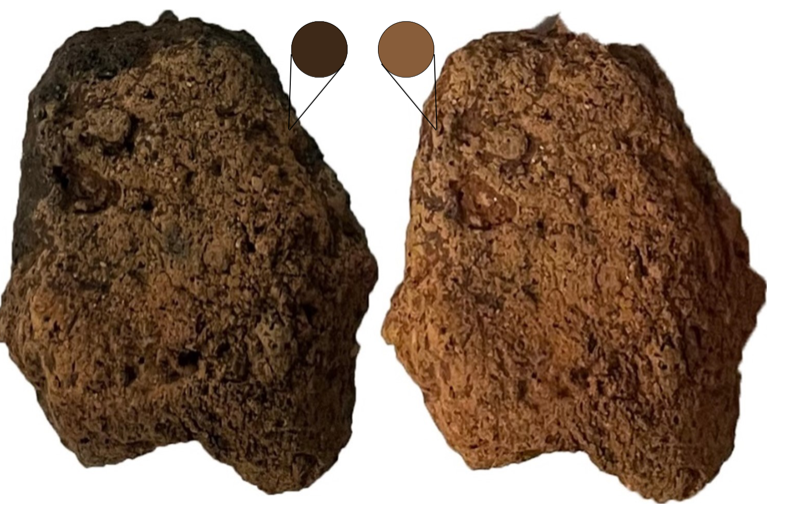
Figure 5: A comparison of the color change in daub from Group 2 after refiring at a higher temperature in the kiln.
Kiln Work
Refiring the daub samples did provide some useful information about the original fire that destroyed the house: Group 2, the darker porous group, began to change at the lowest temperature, somewhere between 950°F and 1,000°F (Figure 5). Meanwhile, Groups 1,3,4, and 5 had several samples change color only at the highest temperature (~1,200°F). The reddest samples never changed color (presumably because all organic materials had been burned out of them in the original fire), and the grey colored samples turned red as the heat went above 1,100 degrees and finished burning out any remaining organics.
Petrography Results
Using the data from his point-count method, Duke was able to discern three separate categories that the samples fell into based on the visible components and the texture/size of these components. The pottery sample (6K) contains feldspar and mica schist (which were not seen in either of the two daub samples), has more angular inclusions, and has a larger average grain size than the daub. These factors indicate that the clay used for the pottery was prepared, possibly with levigation to remove the unwanted silts, but also with human-crushed materials. Meanwhile, both daub samples (1A & 3E) contain many more very fine-to-medium particles, and both are largely comprised of sub-rounded quartz and quartzite. This can be explained by the natural weathering of the rock over time whereas the more angular additives seen in the pottery sample were crushed by a human to be used as temper, never being weathered and smoothed. Duke states in his report that sample 1A seems almost entirely temperless and contains very fine-to-fine silt particles that were largely absent from the clay used in pottery which was often levigated. The report also declares that sample 3E occupies a place somewhere between these two other samples, with a larger average grain size than 1A, but more angular components akin to the grit used as temper in sample 6K. However, when examined through each of these individual factors, the daub samples are much more similar to each other than either of them are to the pottery sample.
pXRF Results
The pXRF scan provided some very interesting results in relation to the origin of the clay being used as daub (Figure 6). The composition of every piece of daub scanned was nearly identical to the raw clay samples taken from the Cummings Site, but slightly different from composition of the surrounding waterways. With this information I can conclude with relative certainty that the clay being used for daub was non-prepared primary clay from within the proximity of the site. If the clay being used were secondary clay from the riverbed, the composition would be noticeably different due to all organics and most inclusions being washed away over time. Each of the samples was scanned using the pXRF at different power levels in an attempt to penetrate beyond the surface of the samples.
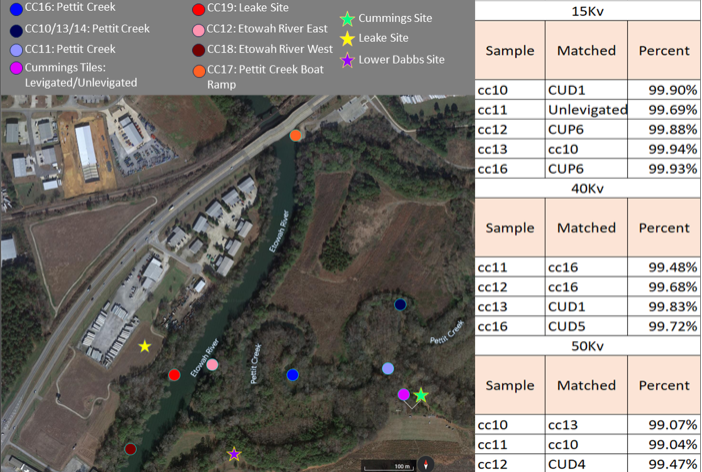
Figure 6: A map showing the results of the pXRF scan. Each different dot is a raw clay sample. The table provides a comparison of the most similar compositions.
Discussion
Groups 2 and 3
While executing the microscopy phase of this research, one recurring question I had was whether Groups 2 and 3 were truly daub or if they were NDFC that was burned during conflagration. This question originally arose when I was first categorizing the samples and noticed how much organic material was still in Group 2, causing it to be so dark. The second factor was the texture of the groups, they are much rougher on the surface than Groups 1, 4, and 5, leading me to question their validity as daub that had been plastered onto a wattle frame. Furthering this, 483g of Group 2’s total 1218g of weight (29%) was excavated from around the post holes in the NW quadrant of the house. So, is it possible that this group was clay that had been packed around posts and incidentally fired when the house was burned down as opposed to a plastered substance? Groups 2 and 3 also had the largest inclusions of any group, with several pieces of daub having stone inclusions over one centimeter in length. One explanation I encountered early on was in Lacquement (2004), where it is mentioned that some Mississippian homes were constructed with shallow trenches dug along postholes and plugged with wood for added stability. We currently don’t see evidence of this at the Cummings Site, but if this ends up being the case for this site, it could explain some of the differences we see in composition and burning patterns between these groups and the other daub groups.
Evidence countering this argument consists of several Group 2 and 3 samples that did exhibit wattle impressions. These impressions matched the width of impressions in Groups 1, 3, and 5, but differed in frequency, with fewer samples from Groups 2 and 3 exhibiting impressions than the other groups. One of the most interesting pieces of Group 2 is a fragment that has a 3-hole mud dauber’s nest as well as a wattle impression. This caused me some confusion, since almost 30% of Group 2 daub originated from around a posthole and mud daubers build their nests in elevated places. The mud dauber’s nest had been recovered in the NW quadrant of the house floor after surviving the conflagration, bioturbation, and excavation of the house. But it shared several key characteristics with Group 2 daub, including the dark coloration and rough texture. These factors would be interesting leads for further research on the appearance and texture of Groups 2 and 3, but one hypothesis is that sections of the wall were built at different times and may have contained different water levels during the burning process. Alternately, if these pieces of daub were lower on the house wall around pine posts, the moisture from the burning posts may have caused steam to burst from the clay, causing their rough appearance and introducing organic matter in the form of sap.
Another way to explain this group’s odd form is if we examine both Kruger (2015) and Lacquement (2004) and how they describe the destruction of a daub structure and a wattle frame respectively. If it’s the roof that initially caught fire, Dr. Kruger’s model below could explain how the mud dauber’s nest near the top of the structure was fired but fell to the house floor as the fire progressed (Figure 7). This idea could complement the outcome of Lacquement’s (2004:107) house frame fire, where the base of the posts burned away before the length of the post, creating a series of fallen posts as opposed to fully burned ones. Meanwhile the thatch used as roofing “began sliding down the walls and accumulated on the ground around the exterior side of the wall poles, where it continued to smolder and burn”. This combination of events could help explain why Groups 2 and 3 seem to hold more organic matter within their clay but are also a rougher texture than the daub of Groups 1,4, and 5.
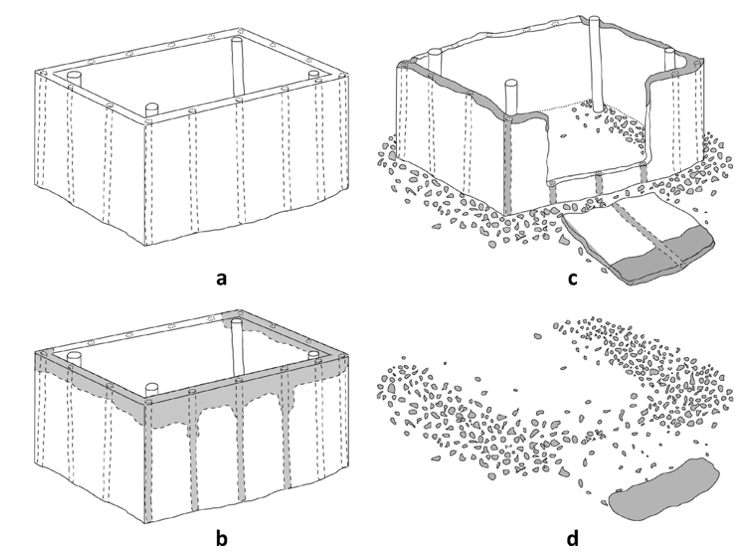
Figure 7: An example of sintering patterns and the resulting daub fall courtesy of Kruger (2015). The darker color indicates where the daub is sintered (coalesced into a solid or porous mass through heat and compression).
Daub Tempers
One of the more consequential outcomes of the pXRF results is that they indicate a lack of organic temper such as dry grass or thatch in the daub. Looking at Kruger’s (2015) definition of daub, he includes the phrase “plastic, stable, and organic fibrous materials” when defining the material. If the daub from the Cummings Site doesn’t have any organic fibrous material and is entirely earthen, that would indicate a deviation from the belief that daub needs a binding agent and this style is instead plastic enough but also rigid enough on its own to withstand the natural elements such as rain. A daub fall with little to no evidence of grass fibers could be evidence of an opening, where the daub is instead prepared with a sand temper around a door frame or other opening (Kruger 2015:902). One possible counter to this total lack of noticeable organics is that sections of walls may have at one time been mixed with grasses or thatch to keep them stable while other areas of a wall were left raw, perhaps due to patching of the wall where it had begun to degrade.
Several hundred miles away from the Cummings Site (~250 miles) in Mississippi another site with large quantities of daub was found with sparse grass impressions, Lyon’s Bluff. Excavated as part of a Mississippi State University field school in 2003 with a focus on plant impressions in daub, the site is a great resource for beginning to understand the seasonal variations of daub production as well as what the different plant impressions could reveal about preferences or substance availability.
Total Daub Count
As mentioned earlier, 2,004 pieces of daub were used for my research, totaling 8,376.8g of daub. This number seems quite large until the amount of clay needed to build a structure is considered. The best comparison I could find for the Cummings Site was the Long Swamp study conducted by Adam King in Ball Ground, Georgia. This site is interesting because it consists of the excavation of several structures, and all of them have produced daub, even if it’s only several pieces. Of all the excavations at the Long Swamp Site, the largest amount of daub recovered was from “Area 2” and totaled 8,407.8g, only 100g more than my total assemblage from the Cummings Site. However, unlike the Cummings Site, this amount of daub was being excavated from multiple structures, not a single home, making the high efficacious daub count an interesting factor moving forward.
The Lyon’s Bluff Site, excavated by Seltzer and Peacock in 2003, is also a good corollary site when examining daub quantities. The goal of the excavation at this site was to produce a large enough amount of daub so that they may begin analysis of plant impressions and attempt to determine the season of manufacture for the daub. This field school excavated “several garbage bags worth of daub” (Peacock 2011), but I was unable to find the weight or count of the daub recovered. In the study, it’s mentioned that radiocarbon dating from nutshell in the feature provided a date range of 1420-1490 CE, making this site slightly later in time than the house being excavated at the Cummings Site, and also several hundred miles away.
Daub Falls
A trend I noticed in the Cummings Site daub collection throughout my research was that almost half of the total artifact bags selected for use came from the NW quadrant of the house (14 of 30 bags). However, when looking at origin location by weight, a much more disproportionate correlation appears between the quadrants of the house. 82% of the daub’s weight originates in the NW quadrant, 5% in the NE and SE quadrants, and 8% in the SW quadrant. This seems odd if the house collapsed in a manner similar to the one outlined in Kruger’s 2015 paper (Figure 7) where the daub fall is more evenly distributed around the perimeter of the house as opposed to a dense distribution of daub inside the house walls. No efficacious daub was recovered from the suspected entryway on the southern side of the house, leading to even more questions about the outcome of this specific daub fall.
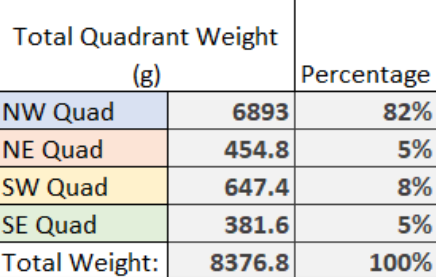
pXRF Results
If the pXRF results indicate the true composition of the daub, it would point to the idea that the clay being used for this house was dug out of the ground out of/immediately adjacent to the house floor and was then plastered onto the wall with little to no preparation. This would be unusual for a site in this period where we typically see grass inclusions within the recovered daub to help with plasticity and stability (Seltzer and Peacock 2011). It is possible that the one millimeter voids we see in many pieces of the daub such as the ones in Figure 8, are completely carbonized grass pieces that weren’t picked up by the pXRF reader.
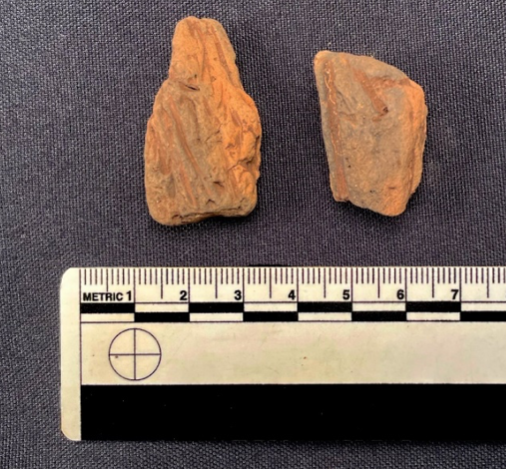
Figure 8: Examples of Group 1 (cylindrical) daub with 1-2mm impressions and organic residue.
Future Research
Future pXRF Studies
Becoming more knowledgeable and skillful in the use of an pXRF scanner would be a good step to continue that line of research. It could provide an interesting lens into the methodology of sourcing clay for daub versus pottery, and when data are cross-referenced from site to site, may help reveal the bigger picture of Southeastern Mississippian wattle-and-daub architecture. As pXRF technology advances, we will be able to learn more about the properties that were sought after when determining which clay sources to use, which were to be avoided, and which were preferred when making pottery as opposed to daub or other clay artifacts. If possible, I would like to, at some point, return to this sample of daub and raw clay to better understand the results of the reading and try those same pieces again to see if the elemental composition remains the same or changes with the honing of pXRF usage.
Daub Collection
The biggest change for the future I’d like to see is the collection and storage of daub for further examination instead of the current trend of weighing it and disposing of it due to its unwieldy, cumbersome, and fragile nature. We see from authors such as Seltzer and Peacock (2011), Kruger (2015), Quiles (2022), and Sherard (2009) the large amount of knowledge we can procure from a well-preserved daub fall that hasn’t been disintegrated by modern plows or post-depositional degradation. We can better understand certain aspects of life such as seasonal construction patterns, the layout of architectural/domestic structures, or even habitation patterns, all from daub. We can manage this through organic imprints and debitage found in daub, differences in composition between samples from the same site, or with experimental archaeology and the recreation and destruction of structures. If daub is looked at as a primary area of study, like it is at the Cummings Site or Lyon’s Bluff, as opposed to a byproduct of an excavation, I believe it will begin to reveal more information about the people living in the Southeast.
Another reason I believe daub collection should be more highly prioritized at sites is because I was unable to find any evidence of daub with human finger or handprints, but there was at least one piece of daub from the Cummings Site collection that has a chert inclusion. While there is currently no evidence to support this, this chert may be evidence of tool usage similar to a modern tiling trowel. However, there are several possible reasons we don’t see handprints in daub collections; since daub is applied when wet, finger and handprints may simply be obscured as the runny clay substance dries (Harris 2020), another possibility is that as the outside of the structure is weathered and patched, evidence of handprints may be destroyed naturally. There is also the matter of post-depositional degradation to the outside of daub fragments. Due to the fragile nature of clay, any disturbances (such as plowing, erosion, or other bioturbation) once the daub falls may remove evidence of handprints that were at one point noticeable.
Daub collection is where I believe the largest changes should be made in its study. The larger sample size we have to study across multiple cultures and communities, the more in-depth information we can extract from a previously inconsequential artifact. Having more and diverse fragments will allow researchers to research topics such as whether grass and thatch inclusions were common in all daub, patch daub, or only the preliminary layers to add plasticity; was daub mixed with water at the river source, or was it mixed and applied on-site; were tools used to smooth the plastered walls? These questions and more can only truly be answered if a larger pool of daub samples are collected and examined through a standardized lens.
Clay Sampling
One other future area of research could pertain to the architectural properties of clays with different compositions. Understanding how specific elements or inclusions in a clay deposit affect the plasticity and rigidity of the clay once removed from the ground could help further research into sourcing and production of clay for daub. It could also assist in determining whether daub production was executed by a specialist, similar to pottery construction, or by whomever was going to live in the house as suggested by Sherard (2009). If Sherard’s hypothesis about houses built further from the center of a village being primarily constructed by the inhabitants and not a community group is true, clay sourcing may not be as important as I believe it to be, and they were instead using whatever materials were at their disposal.
House Burnings
Because I don’t know whether the conflagration of the house was purposeful or due to a natural weather event, there is no way to know if the daub fall occurred naturally or was assisted in some way. Using Kruger’s 2015 paper as a base, we know that modern populations move across their land as time passes. The modern wattle-and-daub structure studied by Kruger was supposedly built and destroyed by a local farmer and their family who were possibly moving to a new area. Lacquement (2004) also provides valuable information about the destruction patterns of wattle framed structures, and a continuation of their research could be useful when examining the layout or destruction of houses from the Mississippian period.
Conclusion
This study has several interesting outcomes regarding the sourcing and preparation of daub at this one site. The pXRF scans reveal that the composition of raw clay from the Cummings Site and surrounding creeks is almost identical to the daub found in the daub fall of the house. It also provided insight as to why the texture and shape of daub can vary from group to group despite having the same composition and origin. This research also allowed me to attempt to create a classification method that I hadn’t seen before that could be used to organize large quantities of daub into more manageable groups based on form. Although the pXRF scan showed no difference between the raw clay and the daub with grass impressions, it may become evident that not all daub was mixed with grasses, especially if part of a maintenance regime.
More research is definitely needed since daub has been in the background of archaeological research for the past several decades, but as I’ve found through my own research, more people each year feel the same way and are actively uncovering more of what daub has to tell us about prehistoric life and habitation in the Southeast. While there isn’t currently a large amount of published information on the characteristics of daub, the number of individuals and organizations looking into daub and raw clay preparation is actively growing. Authors such as Harris (2020) and Seltzer (2011) have taken steps towards somewhat niche aspects of daub production already, including energy consumption, production waste, and seasonality. Each of these papers provides a unique look at daub since they were the first to examine daub in those contexts. I wish I had been able to establish more concrete evidence of the findings within this paper, but further research, funding, and time would be needed to fully understand this collection of daub.
Acknowledgements
I would like to thank my faculty sponsor for this research, Dr. Terry G. Powis of Kennesaw State University and his lab assistant, Isabella Rosinko. Without their guidance and help, this project would never have been started. Thank you to Robert Kruger, who responded to my request for access to his research with enthusiasm, leading me down a rabbit hole of Native American architecture I hadn’t expected to enjoy so much. The Cummings Site is owned by Ann Cummings, who was gracious enough to let Dr. Powis use the site as his field school for Kennesaw State and continues to let us dig on her property while occasionally bringing us snacks. I am also very appreciative of the KSU ceramics studio staff, Keith Smith and Jeff Campana, whose kiln and knowledge of ceramics helped give me direction when I was clueless as to how to proceed with firing raw clay tiles and refiring daub samples.
References Cited
Cobb, Charles R., and Patrick H. Garrow.1996. “Woodstock Culture and the Question of Mississippian Emergence.” American Antiquity 61(1): 21-37.
Brown, James A., Richard A. Kerber, and Howard D. Winters. 1990. “Trade and the Evolution of Exchange Relations at the Beginning of the Mississippian Period” In The Mississippian Emergence, edited by Bruce D. Smith, pp.251-274. Washington: Smithsonian Institution Press.
Emerson, Thomas E., and Timothy R. Pauketat. 2008. “Historical-Processual archaeology and Culture Making: Unpacking the Southern Cult and Mississippian Religion.” In Belief in the Past: Theoretical Approaches to the Archaeology of Religion, edited by Kelley Hays-Gilpin and David S. Whitley, pp.167-188. New York: Routledge.
Griffin, Tristen. 2022. “Clay in the Homestead: A Ceramic Analysis of a Middle Mississippian House.” Symposium of Student Scholars, Kennesaw State University, Kennesaw, GA. July 18.
Haley, B.S. 2014. The Big Picture at Hollywood: Geophysical and Archaeological Investigations at a Mississippian Mound Centre. Archaeological Prospection 21(1): 39-47. https://doi.org/10.1002/arp.1477.
Harris, William David. 2020. “Mississippian Period (1000–1700A.D.) Wattle and Daub Construction in the Yazoo Basin: Comparing Energy Expenditure Using Context and Construction Methods.” Master’s thesis, Department of Anthropology, Mississippi State University, Starkville.
Kruger, Robert P. 2015. “A Burning Question or, Some Half-Baked Ideas: Patterns of Sintered Daub Creation and Dispersal in a Modern Wattle and Daub Structure and Their Implications for Archaeological Interpretation.” Journal of Archaeological Method and Theory 22 (3): 883–912. doi:10.1007/s10816-014-9210-2.
Lacquement, Cameron Hawkins. 2004. “How to Build a Mississippian House: Study of Domestic Architecture in West-Central Alabama.” Master’s thesis, Department of Anthropology, University of Alabama, Tuscaloosa.
O’Brien, Michael J., James W. Cogswell, Robert C. Mainfort, Hector Neff, and Michael D. Glascock. 1995. “Neutron-Activation Analysis of Campbell Appliquéd Pottery from Southeastern Missouri and Western Tennessee: Implications for Late Mississippian Intersite Relations.” Southeastern Archaeology 14(2): 181–94. http://www.jstor.org/stable/40713620.
Pluckhahn, Thomas J. 2010. “Household Archaeology in the Southeastern United States: History, Trends, and Challenges.” Journal of Archaeological Research 18(4): 331–85. https://doi.org/10.1007/s10814-010-9040-z.
Sherard, Jeffrey L. 2009. “Analysis of Daub from Mound V, Moundville: Its Role as an Architectural Indicator.” Bulletin of the Alabama Museum of Natural History 27: 29-42.
Shippee, J. Mett. 1960. “A Mississippian House from Western Missouri.” American Antiquity 26(2): 281-283. doi:10.2307/276211.
Seltzer, Jennifer L., and Evan Peacock. 2011. “Determining the Season of Mississippian House Construction from Plant Impressions in Daub.” Southeastern Archaeology 30(1): 123-133.
Sunshine, P. (2006). Wattle and Daub. Oxford: Shire Publications.
